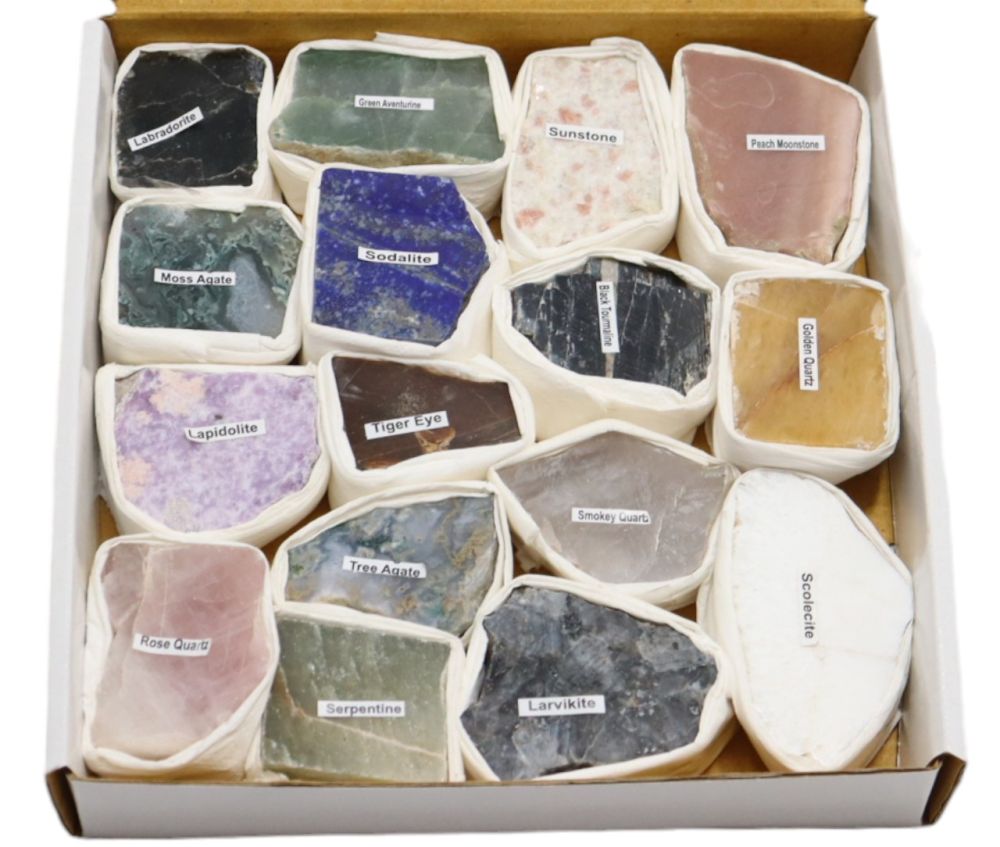We use cookies to make your experience better.
TimmersGems has a new website, existing customers also need to register again.
Combination "flats" ground pieces collection box with 1.4-1.7 kilos of natural minerals in approximately 16 types.
Collection boxes with minerals always do well in stores or at a fair, for example. The minerals come into their own in the beautiful white paper wrappings.
Availability:
In stock
SKU
121380
- Buy 3 for €49.00 each and save 17%
Gemstones are rare minerals that are often used in jewelry and decorative objects. They are characterized by beauty, including visual aspects such as color, shine, fire, transparency and lighting effects. Durability is also an important characteristic, taking into account hardness, fragility/splittability and chemical resistance. Rarity plays a role in how often a gemstone is found in nature. There are many cuts for gemstones, the basic distinction being the cabochon, a spherical cut, and faceted, where the surface of the gemstone is cut into different facets. During the grinding process, properties such as color, color distribution, inclusions, special lighting effects, dispersion and fracture and wear surfaces are taken into consideration. Gemstones are used in necklaces, earrings, bracelets and other jewelry, and also have industrial applications. Some well-known gemstones are diamond, ruby, emerald, sapphire, aquamarine, topaz, tourmaline, amethyst, citrine, carnelian, opal, onyx, turquoise, lapis lazuli and garnet. In the 18th and early 19th centuries it was fashionable to make jewelry with someone's name or initials incorporated into it. The choice of gemstones was guided by the first letter of the gemstone name, which led to the gemstone alphabet. In the 19th century, acrostic jewelry was also made, expressing sentiments in gemstones. The best known of these is the English 'regard' ring, an engagement ring in which the word 'regard' was formed by the gemstones ruby, emerald, garnet, amethyst and diamond.
| Dimensions | 1.4-1.7 Kilo |
|---|---|
| Country of Manufacture | India |












